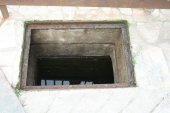




"There is nothing, Sir, too little for so little a creature as man. It is by studying little things that we attain the great art of having as little misery and as much happiness as possible." - Samuel Johnson
 1
1




'Theoretically this level of creeping Orwellian dynamics should ramp up our awareness, but what happens instead is that each alert becomes less and less effective because we're incredibly stupid.' - Jerry Holkins
 1
1




Dillon Nichols wrote:Eliminating exposed water entirely strikes me as rather drastic and impractical.
Pecan Media: food forestry and forest garden ebooks
Now available: The Native Persimmon (centennial edition)
 1
1





"There is nothing, Sir, too little for so little a creature as man. It is by studying little things that we attain the great art of having as little misery and as much happiness as possible." - Samuel Johnson
 3
3









"There is nothing, Sir, too little for so little a creature as man. It is by studying little things that we attain the great art of having as little misery and as much happiness as possible." - Samuel Johnson




I think having land and not ruining it is the most beautiful art that anybody could ever want to own. - warhol




Work smarter, not harder.




Amit Enventres wrote:Truth is, if you ever go to Yellowstone National Park, which one would assume to be one of the most balanced ecosystems in the country, you'll note the huge number of mosquitoes. Perhaps there was a control program in the past? Still, you'd think the ecosystem would have recovered. Too many tourists? Then there should be more mosquito predators to compensate. So, I'm not sure what the "natural" and "healthy" population of mosquitoes is supposed to look like. I do know though, that I don't like them and I want the tip the system in my favor, if at all possible.




siu-yu man wrote:Sheri, thanks for sharing those videos.
that Bush Library one was really interesting.
did she happen to say roughly the amount of tea per volume of water by chance?




...take from me the spirit of sloth, despair, lust of power, and idle talk

|
I'm a lumberjack and I'm okay, I sleep all night and work all day. Tiny lumberjack ad:
World Domination Gardening 3-DVD set. Gardening with an excavator. richsoil.com/wdg |




